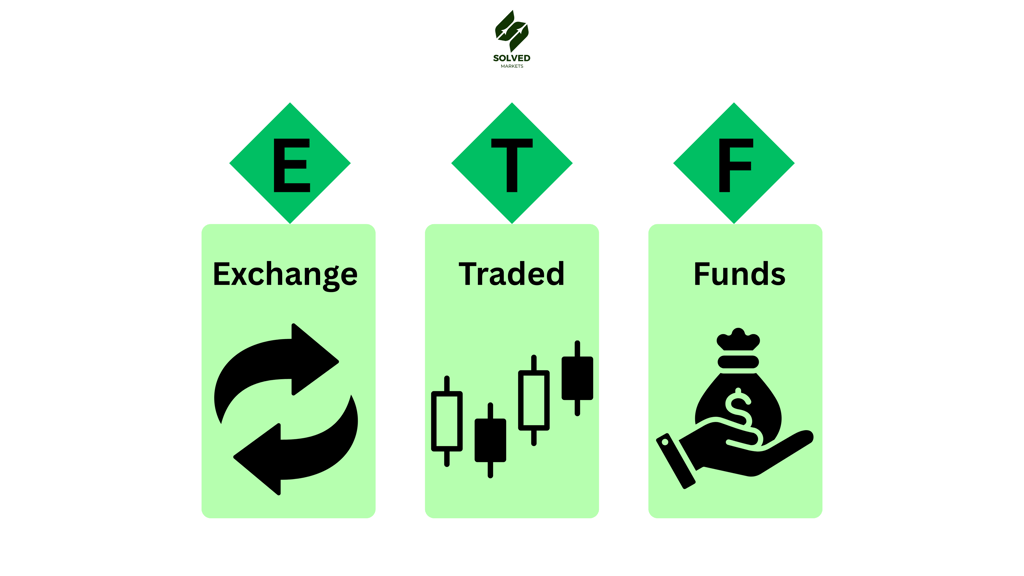What is an ETF? A Simple Guide to Exchange-Traded Funds


INTRODUCTION
If you’ve been exploring ways to invest your money, chances are you’ve come across the term ETF. But what exactly is an ETF, and why is it becoming so popular among investors? In this blog, we’ll explain ETFs in plain language and help you understand why they could be a smart addition to your investment portfolio.
What Does ETF Stand For?
ETF stands for Exchange-Traded Fund. Simply put, an ETF is a type of investment fund that holds a collection of assets — like stocks, bonds, or commodities — and trades on a stock exchange, just like a regular stock. Think of an ETF as a basket of different investments. When you buy one share of an ETF, you own a tiny piece of everything inside that basket.
How Do ETFs Work?
Imagine you want to invest in the top 500 companies in the U.S. — companies like Apple, Microsoft, and Google — but buying shares in all of them individually would be expensive and complicated.
An ETF makes it easy. For example, the S&P 500 ETF holds shares of those top 500 companies. By purchasing one share of this ETF, you’re instantly investing in all those companies at once. ETFs trade on major stock exchanges (like the New York Stock Exchange), so you can buy and sell them throughout the trading day, just like stocks.
Why Do Investors Like ETFs?
ETFs have become extremely popular, especially among beginner investors, for several good reasons:
1.Diversification
ETFs spread your money across many different investments. Instead of putting all your money into one stock, you own small pieces of many companies, reducing your overall risk.
2.Lower Costs
Most ETFs are passively managed, meaning they track an index (like the S&P 500) rather than having a team of managers picking stocks. This often means lower fees compared to mutual funds.
3.Flexibility
You can buy and sell ETFs anytime the stock market is open. This gives you more flexibility than some traditional investment funds that only trade at the end of the day.
4.Transparency
Most ETFs clearly show exactly what assets they hold. You always know where your money is invested.
5.Accessibility
You don’t need thousands of dollars to start investing in ETFs. Many ETFs allow you to invest with just a small amount of money.
Are ETFs Safe?
No investment is completely risk-free, but ETFs are considered relatively safe for beginners because they provide instant diversification. However, your ETF can still lose value if the overall market or sector it tracks performs poorly.
It’s important to choose ETFs that match your risk tolerance and investment goals.
How to Start Investing in ETFs
Getting started with ETFs is simple:
Open a Brokerage Account
You’ll need an account with a brokerage platform like Fidelity, Charles Schwab, Robinhood, or others.
Choose Your ETFs
Look for ETFs that match your goals — for example, broad market ETFs for steady growth, or dividend ETFs for income.
Invest Regularly
Many investors use a strategy called dollar-cost averaging, where they invest a fixed amount regularly, reducing the impact of market ups and downs.
Hold for the Long Term
ETFs are ideal for building wealth over time. Try to avoid reacting to short-term market swings.
Conclusion
ETFs offer an easy, low-cost, and diversified way to start investing. Whether you’re saving for retirement, building a rainy-day fund, or simply looking to grow your money, ETFs can play a valuable role in your investment strategy.
If you’re ready to explore ETFs but aren’t sure where to start, working with a financial advisor can help you choose the right ones based on your needs.


